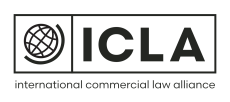Immigration New Zealand (INZ) has implemented changes to both the Investor Plus and Investor 2 Resident Visa categories.
In our precursor article published in December last year, we outlined some of the released policy at that stage, and it is good to see that all the proposed (positive) changes have been implemented. However, there are more changes than expected that are also positive from a general New Zealand point of view.
Although not intentional, the changes have slightly shifted the policies to favour applicants from Western jurisdictions (especially in the Investor 2), and importantly, have built in flexibility to satisfy the physical presence requirement in both categories for those who invest in “growth orientated” investments (essentially anything but bonds). This has created a really smart incentive to shift applicants away from bonds (solely).
Below are the main points to note:
Investor 1 (Plus) Category
- 25% Investment in “growth orientated” investments allows the physical presence requirement of 88 days to be spread over the entire three year investment term, rather than fixed at 44 days in each year of the last two years of the investment – this flexibility is a significant improvement, and enhances what is already an excellent visa product. Applicants are now not going to “waste” time spent in New Zealand for year one, and ironically, year one for most active investors is typically presence heavy as they come in to work on establishing and acquiring investments. Most Investor Plus applicants will find this flexibility attractive, so we believe it is highly likely that investors who would typically only invest in bonds, will now establish mixed bond/equity portfolios at this ratio.
Investor 2 Category
- Minimum investment amount increased to NZ$3.0m, and removal of Settlement Fund requirement – simple and targeting higher value return (plenty of international demand for this visa product). Note NZ$2.5m is the actual number they are targeting as default (refer below). In practice this is what was required under the old policy, so they are not (effectively) reducing the number of people who can qualify under the new regime in any material way.
- Increase in cap from 300 applications per year to 400 – this creates stability and certainty because NZ$3.0m (NZ$2.5m) is not an unreasonable lift. Therefore, we don’t believe that applicants will need to invest too much more to secure an invitation unless they score poorly. Those with limited funds, limited English, less business experience, and not wishing to pursue “growth orientated” investments are the main ones at risk of not being invited to apply, who may well have snuck in under the old policy.
- 25% Investment in “growth orientated” investments allows the physical presence requirement of 438 days to be spread over the entire four year investment term, rather than fixed at 146 days in each year of the last three years of the investment – this will be popular, and is practical as it will not be difficult to establish a mixed bond/equity portfolio at this ratio to secure that “credit” for year one physical presence.
- 50% investment in “growth orientated” investments allows the applicant to reduce their investment from NZ$3.0m to NZ$2.5m (NZ$1.5m growth orientated and NZ$1.0 non growth orientated) – this is the desired number for INZ. They want NZ$2.5m and a large part of that out of bonds. This will become the “go to” structure, but opens up risk for financial loss, particularly those who are investing in equities for a relatively short period of time (less than five to seven years). QDII Chinese investors (who present less value to New Zealand) are at risk of financial loss here, because of the requirement to return their investment capital to China shortly after the investment conclude is a relatively short equity investment timeframe (equities need to be held long term to smooth out market falls).
- A softer “business experience” definition – this is a significant improvement and a welcome change. It is now much easier to assess and apply in practice.
In addition to these specific changes per policy, for both categories the definition of “acceptable investment” around commercial property, private equity, philanthropic and angel investments has been revised and is now much easier to navigate.
What have they got wrong?
The policy is 95% there, although the “ownership” of funds definition does still have limitations in practice, especially for more complicated financial investments/corporate structuring where standard tax layering (from an international perspective) is not permitted in a traditional sense. This is our only disappointment with the changes. There was an opportunity to look hard at this and align standard legal structuring around visa based investments (moving from “ownership” to effective “control”), instead of having to implement non-typical ownership structuring (in a shareholding sense) to meet the personal “ownership” definition.
What does this all mean?
In the international context, both in terms of international push factors and visa product comparison with some of our competitors (especially Australia), New Zealand is in good shape.
Many of our Investor Plus clients are going to like the physical presence flexibility, and we suspect that there will be a fair number of our current applicants and visa holders approaching us to negotiate a “switch” into this new flexibility space. On that note, we are still yet to receive the transition policy (they are working on it), so we will cover that for existing applicants and visa holders under the existing policies who would like to move into the new polices once that is released.



